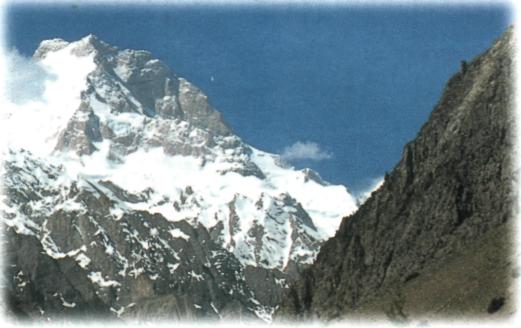
- •Lesson 2 Grammar: the Present Indefinite Tense Where to find rocks?
- •Where do rocks come from?
- •Lesson 3 differences between rocks Rock textures
- •Lesson 4 Grammar: the Past Indefinite Tense
- •Investigating how porous rocks are
- •Acid rain (1)
- •Acid rain (2)
- •Lesson 6 Grammar: The Future Indefinite Tense the effect of temperature change
- •By daily expansion and contraction.
- •By freeze-thaw damage
- •Transportation of fragments
- •Lesson 8 Grammar: Future actions in when-, if- clauses Flooding and sediment formation
- •Lesson 9 Transport of sediments
- •Lesson 10 Grammar: The plural of nouns
- •Pollution
- •Lesson11
- •Lesson 12
- •Lesson 13 (revision)
- •Erosion of rocks
Introduction to rocks
Матеріали до практичних занять з навчальної дисципліни
«Англійська мова (за професійним спрямуванням)»
спеціальності 5.070705 «Пошук та розвідка геологічними методами», ІІІ семестр
Укладач: Головська О.Є.
Lesson 1.
Grammar: To be, to have, personal, possessive pronouns.
What are rocks?

There are more than 2500 kinds of mineral. Scientists can tell each one by its colour, hardness, crystal shape and the way it reflects light. Gold, silver, diamonds and rubies are minerals. So are the clays used to make pottery and the graphite in your pencil lead.
Remember the words:
rock – гірська порода soft – м’який hard – твердий shape – форма form – форма, різновид mixture – суміш to form – формувати (ся), утворювати (ся) mineral grains – мінеральні зерна clay – глина substance – речовина to use – користуватися to crumble- кришитися to glue – клеїти, приклеювати to contain – містити в собі
Answer the questions:
Why do you use a sledgehammer to break some rocks?
Which rocks crumble in your fingers?
What is the reason for such a difference?
How long do different rocks form?
What do rocks consist of?
What can rocks contain?
Exercise1. Make the following interrogative and negative:
1). Rocks are of different forms. 2). This rock is hard. 3). These rocks are soft. 4). This rock is a mixture of substances. 5). This substance is hard. 6). These substances are tightly glued together. 7). Rocks are made up of mineral grains. 8). This is clay. 9). These are organic materials. 10). There are separate pieces of smaller rock.
Exercise2. Make up 5 questions with have you/we/they and 5 with has he/she/it. Let your fellow students answer.
Exercise3. Translate into English.
1.Я даю йому мій молоток. 2. Він дає мені свій шматок породи. 3. Вона показує нам тверду породу. 4. Вона віддає їм свої записи. 5. Ми показуємо їй мінеральні зерна. 6. Вони дають йому свій молоток. 7. Ти користуєшся своїм молотком щоб розбити наш шматок породи.
Lesson 2 Grammar: the Present Indefinite Tense Where to find rocks?
Mostly, rocks are well hidden. We don't see them because they are either covered with earth or we've built roads and houses all over them. However if you dig deep enough they are there, because the earth's crust is made up of rock.
In some places rocks rise out of the earth to form spectacular mountains, some of which are over 5 miles high. In other places rocks form smaller outcrops pushing through the earth above.
In many parts of the country rock is quarried for building material. Some of these quarries are huge and very deep rocks are exposed.
Where do rocks come from?
Most rocks are formed over hundreds of thousands of years by several different processes some of which involve enormous forces. We'll read more of this later in this book.
Remember the words:
to be made up =to consist of – складатися з … to find (found, found) –знаходити the Earth – Земля to hide (hid, hidden) – ховати(ся) the earth’s crust – земна кора to cover – покривати, вкривати several – декілька to dig (dug, dug) – копати, рити enormous – величезний
Answer the questions:
What do we mean, saying that the rocks are well hidden?
Why don’t we see the rocks?
What should we do to find rocks?
How long does it take a rock to form?
What is the earth’s crust made up of?
What do rocks form rising out of the earth?
Where are building materials taken?
Exercise 1. Put in the missing words:
We don’t see rocks because they are … with earth.
If you … deep enough you’ll see rocks.
The … … is made up of rock.
Rocks can form … … rising out of the earth.
The place where we can see rocks on the surface is called an … .
Rocks are … for building materials.
In huge quarries very deep rocks are … .

Exercise 2. Put questions beginning with the words in brackets:
Rocks hide in the earth. (Where…?)
We don’t see rocks. (Why…?)
Earth covers the rocks. (What…?)
We build roads and houses. (What…?)
The earth’s crust consists of rock. (What…of?)
Rocks form spectacular mountains. (Where…?)
Rocks are quarried for building materials. (What…for?)
Lesson 3 differences between rocks Rock textures
If ever you look at a piece of rock you can be sure that it will fall into one of these two groups
NON-POROUS, SHINY, HARD b) POROUS, DULL, CRUMBLY ,


In (a) the grains are interlocking; they fit tightly together with no spaces between the grains.
In (b) the grains can’t interlock because of their shape. They don’t fit tightly together and there are spaces in between the grains.
Remember the words
difference – різниця shiny – блискучий dull – тьмяний crumbly -- крихкий granite – граніт slate – сланець sandstone – пісковик limestone – вапняк properties – властивості
Answer the questions:
What are the properties of granite and slate?
What are the properties of sandstone and limestone?
What is the reason for the difference between these two groups of rocks?
How are the grains arranged in the rocks of group (a)?
Why can’t the grains interlock in the rocks of group (b)?
What is there in between the grains in the rocks of group (b)?
